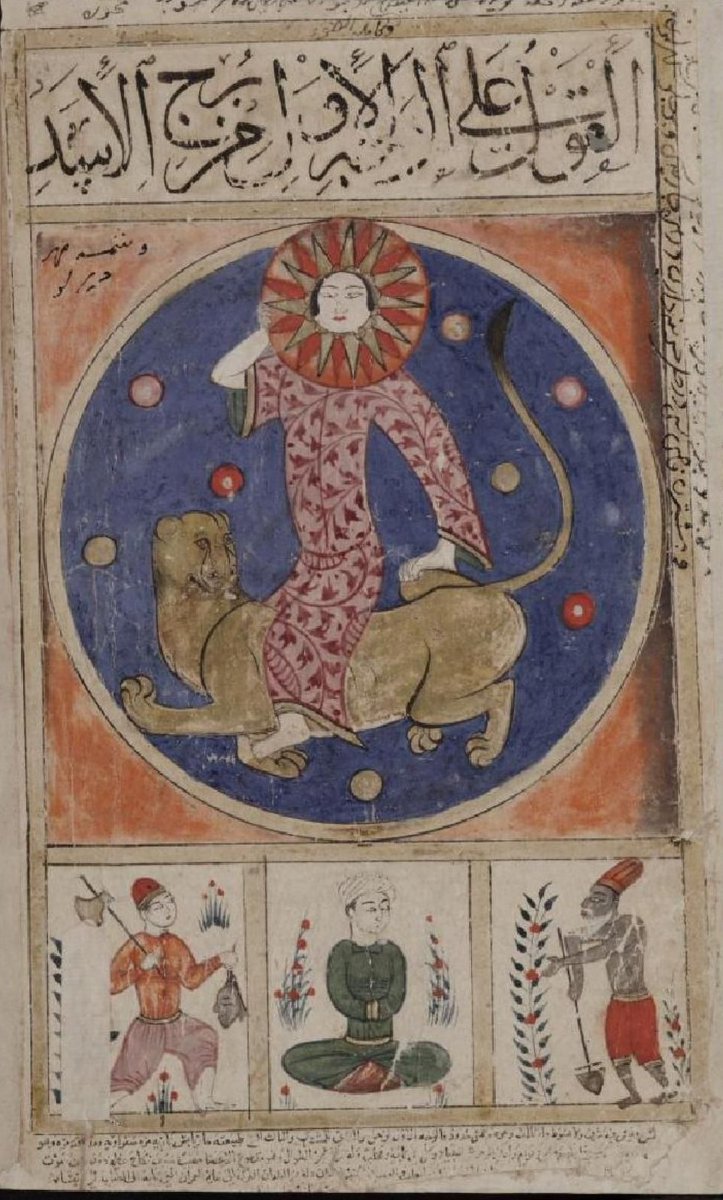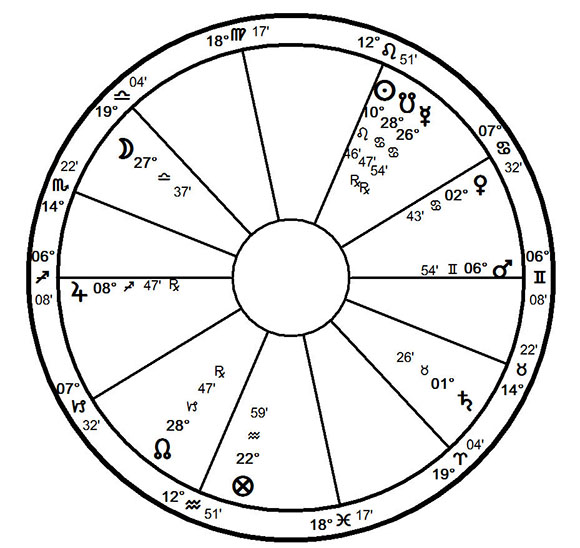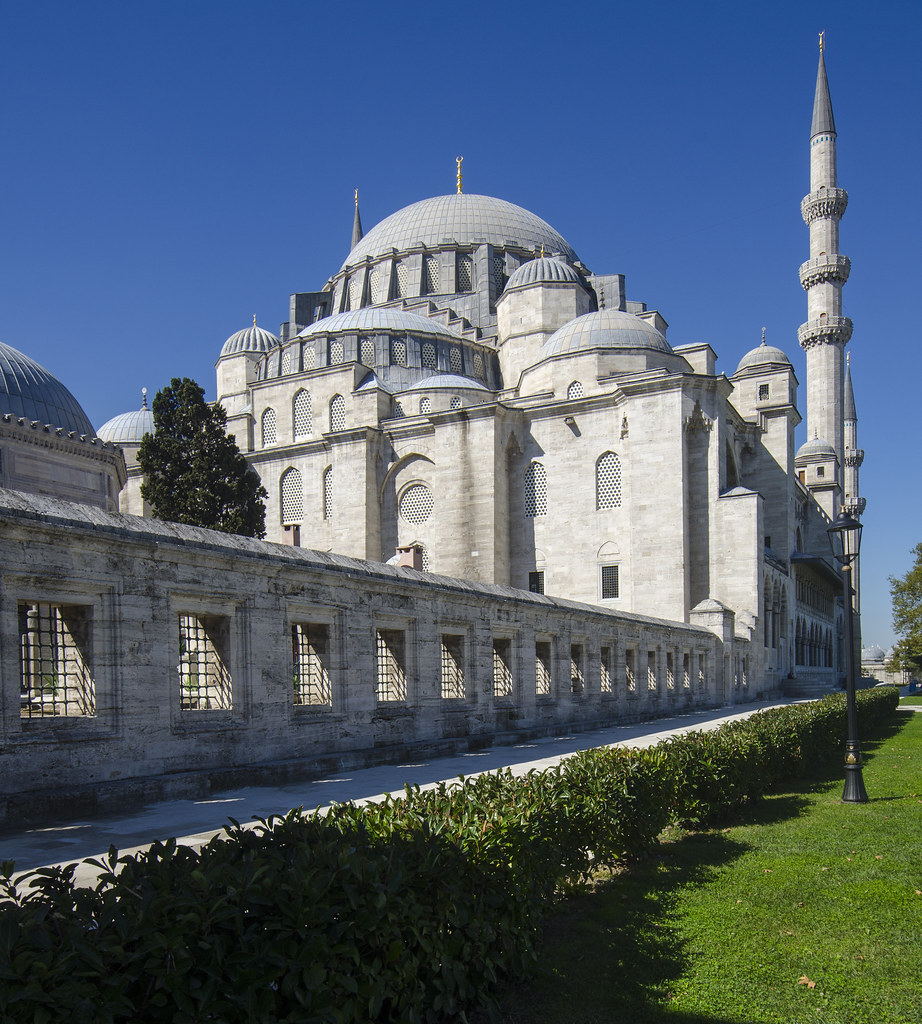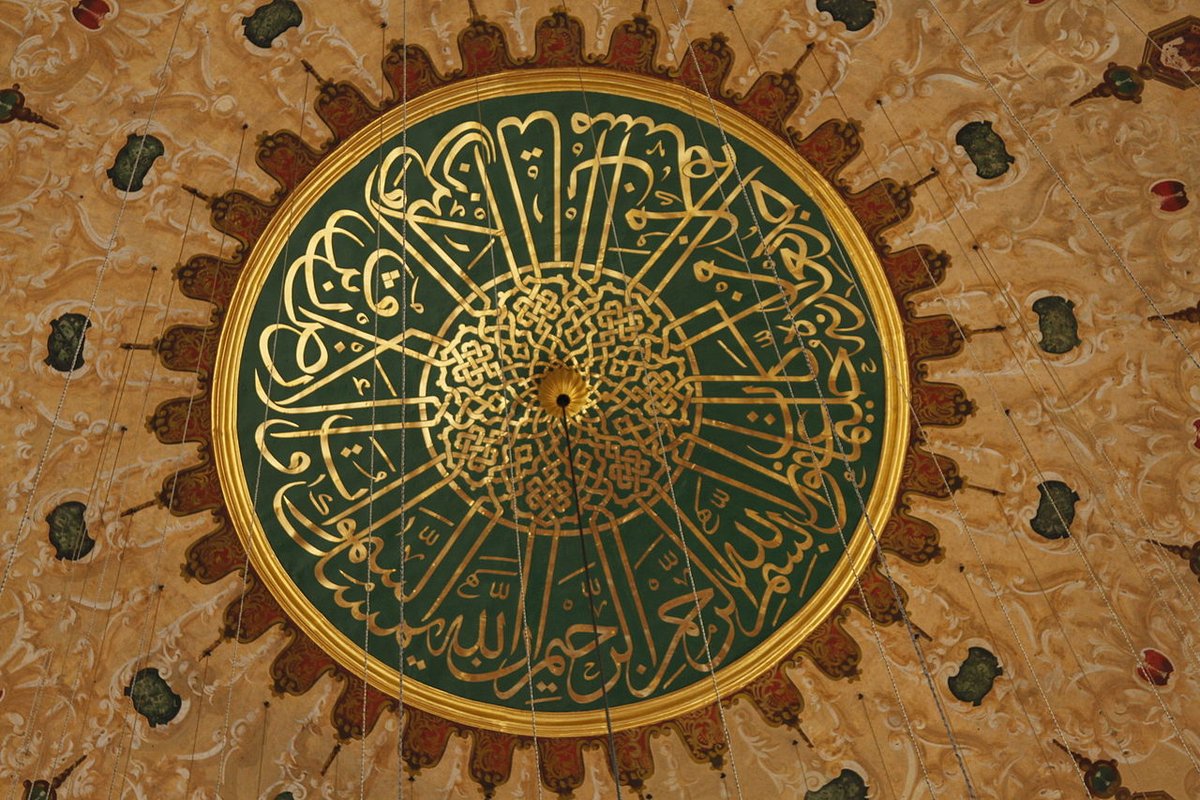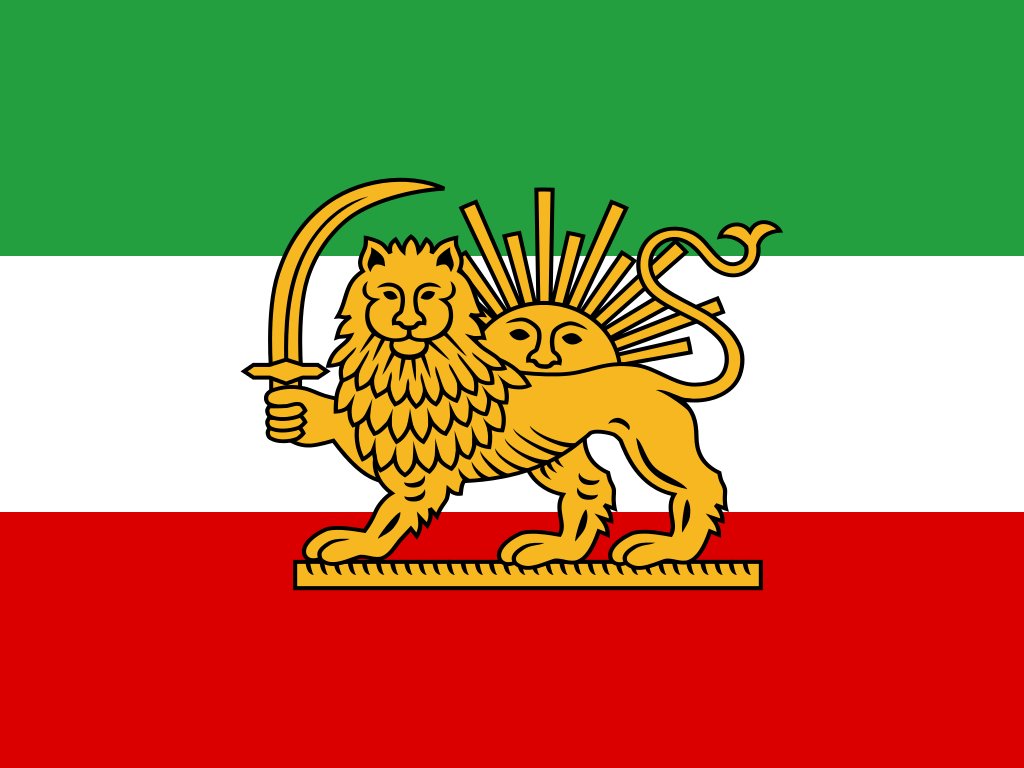For Medieval Muslim astrologers, Leo was one of the most important zodiac signs. Deemed the kingly star, Leo was used throughout Islamic history to time battles, construction, and as an omen of royalty.
A thread on Leo in astrology from the Islamic World
A thread on Leo in astrology from the Islamic World
Those born under Leo or Al Asad are said to be loud of voice, talkative, and harmonious and pleasant of body.
They are persuasive and know how to quarrel, courageous, but fearful of what cannot be seen. They are described as broad chested with marks on their knees.
They are persuasive and know how to quarrel, courageous, but fearful of what cannot be seen. They are described as broad chested with marks on their knees.
Al Biruni says they are kingly, hard-hearted, bold, but troublesome and have difficulties with the truth.
Leo is described as masculine, hot, fiery, dry, and choleric. Its season is Summer.
They are lustful but lack children or have few.
Leo is described as masculine, hot, fiery, dry, and choleric. Its season is Summer.
They are lustful but lack children or have few.
Red and purple are good colors for them to wear and they find much of their fortune on Wednesdays
They make good leaders, knights, and presenters and performers of all forms
They make good leaders, knights, and presenters and performers of all forms
Leo is said to be the home of the luminary the Sun which is depicted as a regal figure with solar rays.
You can see a depiction from the 14th C Kitab al Bulhan above in the first tweet.
You can see a depiction from the 14th C Kitab al Bulhan above in the first tweet.
Gemini obeys Leo who also commands Taurus. Leo is friendly with Scorpio
The span of life was divided up in the zodiac with Leo linked to youth.
Leos are said to struggle at 20 and 30 and in their youth will suffer from love-sickness. This is classically understood as such a fierce love as it manifests physical symptoms of illness.
Leos are said to struggle at 20 and 30 and in their youth will suffer from love-sickness. This is classically understood as such a fierce love as it manifests physical symptoms of illness.
Ancient and premodern people believed love had different manifestations.
The human body was divided up by the zodiac with Leo linked to upper stomach, and heart
Muslim astrologers also designated parts of the world as governed by the Zodiac with Leo corresponding to the lands of the Turks, Jerusalem, Sistan, deserts, mountains, palaces and mansions
Muslim astrologers also designated parts of the world as governed by the Zodiac with Leo corresponding to the lands of the Turks, Jerusalem, Sistan, deserts, mountains, palaces and mansions
Because of its many associations, Leo was used in a variety of magical talismans.
One famous healing charm states to craft a talisman when the Moon is in the 10th lunar house (manzil al qamar), known as Al Jabha found in Leo.
One famous healing charm states to craft a talisman when the Moon is in the 10th lunar house (manzil al qamar), known as Al Jabha found in Leo.
One must wash the talisman and use the water as a potion for the sick to drink.
It was used to ease childbirth and to heal maladies of stomach.
It was used to ease childbirth and to heal maladies of stomach.
Another charm made with the third face of Leo of Mars could be used to make wolves descend on a village. Or for victory in battle craft the image of a man and serpent fighting when the Moon enters the 12th lunar house, Al Sarfah found in the tail of Leo
Some famous Leos from Islamic history include the 9th century caliph, Al Mu’tasim who came to prominence thanks to raising a private army of Turkish soldiers. He succeeded his brother, passing by his own nephew.
He reordered the empire around his professional army.
He reordered the empire around his professional army.
Note, Leo corresponds to the land of the Turks traditionally.
The famed astrologer, Abu Ma’shar is reputed to be a Leo as well. Abu Ma’shar drew heavily from the early Muslim astrologers, expanding the methods of astrology by writing the most important treaties of the science.
His writings would shape the medieval and renaissance European styles of astrology greatly
The most famous Leo of all though, was the city of Baghdad itself.
When the Caliph Al Mansur sought to build a new capital he turned to Mashallah ibn Athari the Jewish astrologer and the Persian astrologer Nawbakht
When the Caliph Al Mansur sought to build a new capital he turned to Mashallah ibn Athari the Jewish astrologer and the Persian astrologer Nawbakht
They designed a circular city to reflect celestial order and used ikhtiyārāt astrology to select an auspicious time to build.
They elected July 31st 762 CE when Jupiter was in Sagittarius ascendant. Jupiter is the ruler of Sagittarius, but we’ll discuss this connection later.
They elected July 31st 762 CE when Jupiter was in Sagittarius ascendant. Jupiter is the ruler of Sagittarius, but we’ll discuss this connection later.
They also chose the moment when the Sun was in Leo in the 9th House of learning and philosophy.
The election was to fashion a kingly city, a royal seat of learning, glory, and lavish wealth.
The chart here is reproduced by James Holden
The election was to fashion a kingly city, a royal seat of learning, glory, and lavish wealth.
The chart here is reproduced by James Holden
Similarly, when the Ottoman Sultan, Suleiman the Magnificent decided to build The Süleymaniye Mosque he turned to the astrologer Riyazi who elected June 12th 1550 when Leo in the 22nd degree was Ascendant
Riyazi would write the election was to make the The Süleymaniye Mosque a kingly place inhabited by pious humans and jinn alike.
It is indeed a sight to behold
It is indeed a sight to behold
Leo for centuries was the sign of kings and rulers. In the constellational Leo, the star Regulus was known as Qalb al Asad, the Heart of the Lion and was the mark of kings
Good aspects to the star would portend good fortunes while malefic aspects would was disaster for the king
Good aspects to the star would portend good fortunes while malefic aspects would was disaster for the king
Qalb al Asad was one of the royal stars of the Sassanians. The image of a solar lion was be particularly important for Persian monarchs who would see it as their emblem.
The Qajar flag for example has a solar lion on it, invoking the royal heraldry of ancient Persia
The Qajar flag for example has a solar lion on it, invoking the royal heraldry of ancient Persia
Rulers would use astrology to legitimize their ruler, as propaganda, and to time great buildings and wars. For example, the 17th century Mughal Emperor Jahangir minted coins with the zodiac.
Here we see Leo
Here we see Leo
For centuries Leo was the sign of kings, both noble, and feral and brutal.
For historians, astrology offers a way to study the intersection of science, religion, and empire.
I will cover the rest of the zodiac from Islamic history in future threads.
For historians, astrology offers a way to study the intersection of science, religion, and empire.
I will cover the rest of the zodiac from Islamic history in future threads.

 Read on Twitter
Read on Twitter